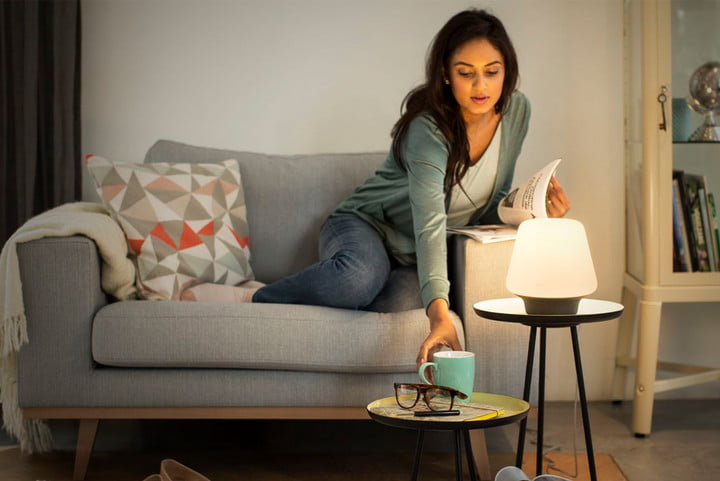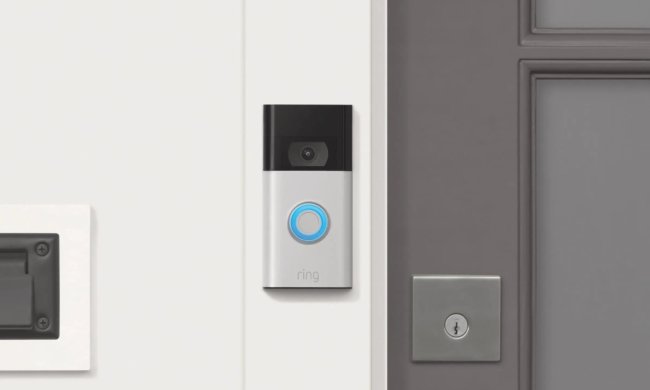The advent of smart lighting has provided a wealth of new opportunities for tweaking personal health. The right color temperatures and timing can optimize focus during the day and ease sleep schedules at night. Let’s dig into the many health factors that smart lighting touches upon.
Note: None of us here at Digital Trends are remotely close to being optometrists or medical doctors. Take the advice of licensed professionals before making big health choices.
How does lighting affect sleep?

Even dim light has a suppressive effect on melatonin production, which is essential to a healthy sleep schedule. Blue light, in particular, suppresses this naturally-occurring hormone, so it is best to limit the amount of screen time spent before bed and have smart lights set to a warmer color range with dimmed brightness.
How does lighting affect eyesight?
Looking long into bright lights can damage your eyes. At the other extreme, focusing on small details with insufficient lighting can also strain your eyes and lead to damage. As far as smart lighting is concerned, ensure your ambient lighting quality is matching the brightness of your computer, phone, and tablet displays to minimize damage at either extreme.
How does lighting affect psychology?
The science generally agrees that natural light provides a wealth of psychological benefits, including improvements in stress levels, creativity, cognitive function, and mood. There is even some research to suggest the warmth and coolness of the colors of ambient lighting can influence our perception of actual warmth and cold. Artificial light like those provided by smart bulbs can provide a stand-in when natural light isn’t available, and studies are showing they can also generate psychological benefits.
What lighting is best for health?
The best lighting conditions for the sake of eye health will depend on the use case and time of day. Generally, you’ll want warmer tones closer to bedtime, as blue light has a notable effect on your sleep schedule. While this applies to your smart lights, it goes doubly for your personal devices. Make sure you activate night mode on your phones and tablets if you’re going to be using them before clocking out for the day.
Is LED lighting bad for your health?
LED lighting is not inherently bad for your health. In general, exposing yourself to bright blue light during the day and dimmer warm light in the evening should line up with your circadian rhythm well. Manufacturers like Nanoleaf and Soraa are well aware of this and tend to offer features that help make those shifts in color tones automatically depending on the time of day.
Beyond sleep schedules, light therapy can actually be used to treat seasonal affective disorder. These regimens include a half-hour of exposure to bright light early in your day to suppress melatonin production.
What is the healthiest LED light color?
While it’s best to keep your lights warm at night — oranges, yellows, and reds — it’s still good to have cooler light active during the day. In general, your smart lights can stay within their range of whites while simply shifting temperature.
What is the healthiest light for eyes?
The best lighting for your eyes matches the brightness of whatever screens you’re looking at throughout the day. This way, you’re not straining to focus on poorly illuminated text, and the backlighting isn’t overloading your retinas. A good test is to put a blank piece of paper next to your screen when it’s turned on and make sure the brightness of the screen matches that of the paper. Make sure to adjust your display brightness throughout the day to accommodate changing ambient lighting. Even with ideal lighting, it’s best to take routine breaks every 20 minutes, focusing on an object more than 20 feet away.
Those are some preliminary thoughts on health and smart lighting. The benefits of optimized lighting will vary from person to person, but with some experimentation, you should be able to find a smart lighting set-up that improves your sleep, mood, and productivity.



